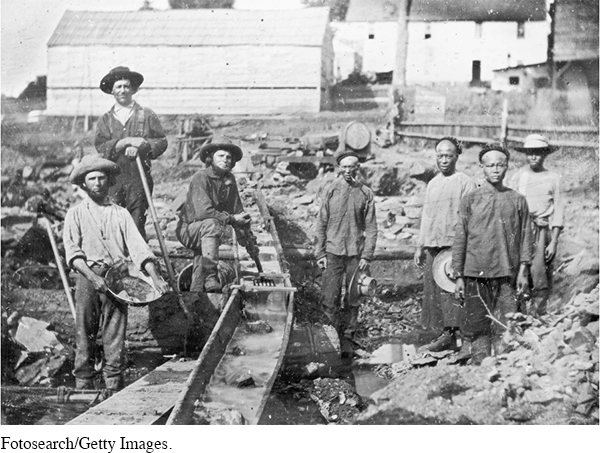Victory in Mexico
Despite heavy losses on the battlefield, Mexico refused to trade land for peace. One American soldier captured the Mexican mood: “They cannot submit to be deprived of California after the loss of Texas, and nothing but the conquest of their Capital will force them to such a humiliation.” President Polk had arrived at the same conclusion. While Taylor occupied the north, Polk ordered General Winfield Scott to land an army on the Gulf coast of Mexico and march 250 miles inland to Mexico City. The plan entailed enormous risk because Scott would have to cut himself off from supplies and lead his men deep into enemy country against a much larger army.
An amphibious landing on March 9, 1847, near Veracruz put some 10,000 American troops ashore. After furious shelling, Veracruz surrendered. In April 1847, after gathering 9,300 wagons, 17,000 pack mules, 500,000 bushels of oats and corn, and 100 pounds of blister ointment, Scott’s forces moved westward, following the path blazed more than three centuries earlier by Hernán Cortés to “the halls of Montezuma” (see chapter 2).
After the defeat at Buena Vista, Santa Anna had returned to Mexico City, where he rallied his ragged troops and marched them east to set a trap for Scott in the mountain pass at Cerro Gordo. Knifing through Mexican lines, the Americans almost captured Santa Anna, who fled the field on foot. So complete was the victory that Scott gloated to Taylor, “Mexico no longer has an army.” But Santa Anna, ever resilient, again rallied the Mexican army. Some 30,000 troops took up defensive positions on the outskirts of Mexico City and began melting down church bells to cast new cannons.
In August 1847, Scott began his assault on the Mexican capital. The fighting proved the most brutal of the war. Santa Anna backed his army into the city, fighting each step of the way. At the battle of Churubusco, the Mexicans took 4,000 casualties in a single day and the Americans more than 1,000. At the castle of Chapultepec, American troops scaled the walls and fought the Mexican defenders hand to hand. After Chapultepec, Mexico City officials persuaded Santa Anna to evacuate the city to save it from destruction, and on September 14, 1847, Scott rode in triumphantly.
On February 2, 1848, American and Mexican officials signed the Treaty of Guadalupe Hidalgo in Mexico City. Mexico agreed to give up all claims to Texas north of the Rio Grande and to cede the provinces of New Mexico and California—more than 500,000 square miles—to the United States (see Map 12.4). The United States agreed to pay Mexico $15 million and to assume $3.25 million in claims that American citizens had against Mexico. Some Americans clamored for all of Mexico, but the treaty gave the president all he wanted. In March 1848, the Senate ratified the treaty. Polk had his Rio Grande border, his Pacific ports, and all the land that lay between. [[LP Photo: P12.09 Miners, Auburn Ravine, California, 1852/

The American triumph had enormous consequences. Less than three-quarters of a century after its founding, the United States had achieved its self-proclaimed manifest destiny to stretch from the Atlantic to the Pacific (Map 12.5). It would enter the industrial age with vast new natural resources and a two-ocean economy, while Mexico faced a sharply diminished economic future. [[LP Map: M12.05 Territorial Expansion by 1860 – MAP ACTIVITY/

Understanding the American Promise 3ePrinted Page 333
Section Chronology